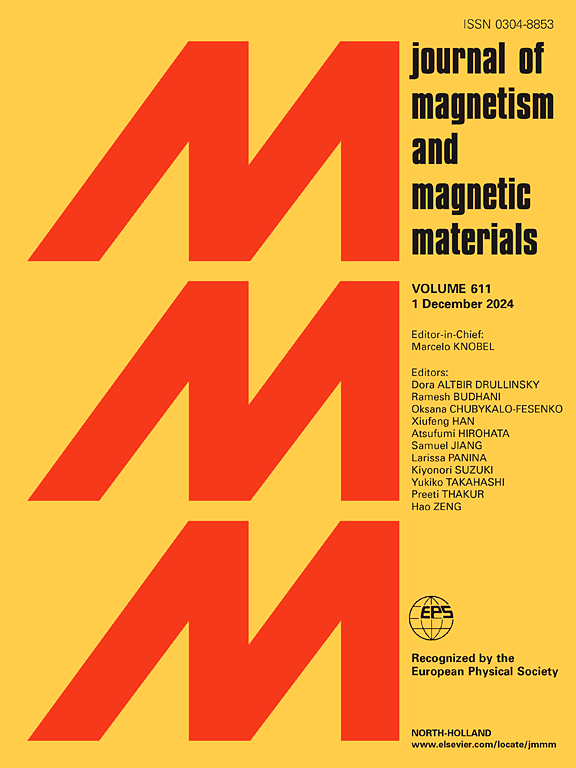Blood flow through a deformable artery and magnetically targeted drug delivery
IF 2.5
3区 材料科学
Q3 MATERIALS SCIENCE, MULTIDISCIPLINARY
引用次数: 0
Abstract
Drug targeting with magnetic nanoparticles to a diseased location is of greater interest in medicine for controlling tumor growth, removing blood clots, managing infections, and treating cardiovascular diseases like atherosclerosis and aneurysm. This article aims to develop a mathematical model for blood flow with injected drug carrier particles into the bloodstream. We assume that carrier particles are loaded with both drug molecules and magnetic nanoparticles, enabling targeted drug delivery to specific locations within the bloodstream by applying an external magnetic field. The arterial wall is assumed to be a linearly elastic solid, undergoing deformation as pressure waves propagate along the blood vessel, driven by the periodic pumping action of the heart. We obtain analytical solutions in two dimensions, considering certain limitations on the nonlinearity of the governing equations. We present solutions based on the Young wave mode (radial deformation) and Lamb wave mode (axial deformation) to observe the impact of wall deformation on the motion of the carrier particles and blood flow. The capturing efficiency of the carrier particles increases with either an increase in the radius or volume fraction of the carriers. The velocity of the carrier particles decreases as the distance from the source of an external magnetic field increases. The trajectory of the carrier particles clearly shows the capturing efficiency, which leads to a greater influence on magnetic particle imaging (MPI).

血液流经可变形的动脉,通过磁性靶向药物输送
利用磁性纳米颗粒靶向疾病部位的药物在控制肿瘤生长、去除血栓、控制感染以及治疗心血管疾病(如动脉粥样硬化和动脉瘤)方面具有更大的兴趣。本文旨在建立注射药物载体颗粒进入血流的数学模型。我们假设载体颗粒装载了药物分子和磁性纳米颗粒,通过施加外部磁场使靶向药物递送到血液中的特定位置。假定动脉壁是线性弹性固体,在心脏周期性泵送作用的驱动下,当压力波沿着血管传播时,动脉壁会发生变形。考虑到控制方程非线性的某些限制,我们得到了二维的解析解。我们提出了基于Young波模式(径向变形)和Lamb波模式(轴向变形)的解决方案,以观察壁面变形对载体颗粒运动和血流的影响。载体粒子的捕获效率随载体半径或体积分数的增加而增加。随着与外磁场源距离的增加,载流子的速度减小。载体粒子的运动轨迹清楚地显示了捕获效率,从而对磁粒子成像(MPI)产生较大的影响。
本文章由计算机程序翻译,如有差异,请以英文原文为准。
求助全文
约1分钟内获得全文
求助全文
来源期刊

Journal of Magnetism and Magnetic Materials
物理-材料科学:综合
CiteScore
5.30
自引率
11.10%
发文量
1149
审稿时长
59 days
期刊介绍:
The Journal of Magnetism and Magnetic Materials provides an important forum for the disclosure and discussion of original contributions covering the whole spectrum of topics, from basic magnetism to the technology and applications of magnetic materials. The journal encourages greater interaction between the basic and applied sub-disciplines of magnetism with comprehensive review articles, in addition to full-length contributions. In addition, other categories of contributions are welcome, including Critical Focused issues, Current Perspectives and Outreach to the General Public.
Main Categories:
Full-length articles:
Technically original research documents that report results of value to the communities that comprise the journal audience. The link between chemical, structural and microstructural properties on the one hand and magnetic properties on the other hand are encouraged.
In addition to general topics covering all areas of magnetism and magnetic materials, the full-length articles also include three sub-sections, focusing on Nanomagnetism, Spintronics and Applications.
The sub-section on Nanomagnetism contains articles on magnetic nanoparticles, nanowires, thin films, 2D materials and other nanoscale magnetic materials and their applications.
The sub-section on Spintronics contains articles on magnetoresistance, magnetoimpedance, magneto-optical phenomena, Micro-Electro-Mechanical Systems (MEMS), and other topics related to spin current control and magneto-transport phenomena. The sub-section on Applications display papers that focus on applications of magnetic materials. The applications need to show a connection to magnetism.
Review articles:
Review articles organize, clarify, and summarize existing major works in the areas covered by the Journal and provide comprehensive citations to the full spectrum of relevant literature.
 求助内容:
求助内容: 应助结果提醒方式:
应助结果提醒方式:


